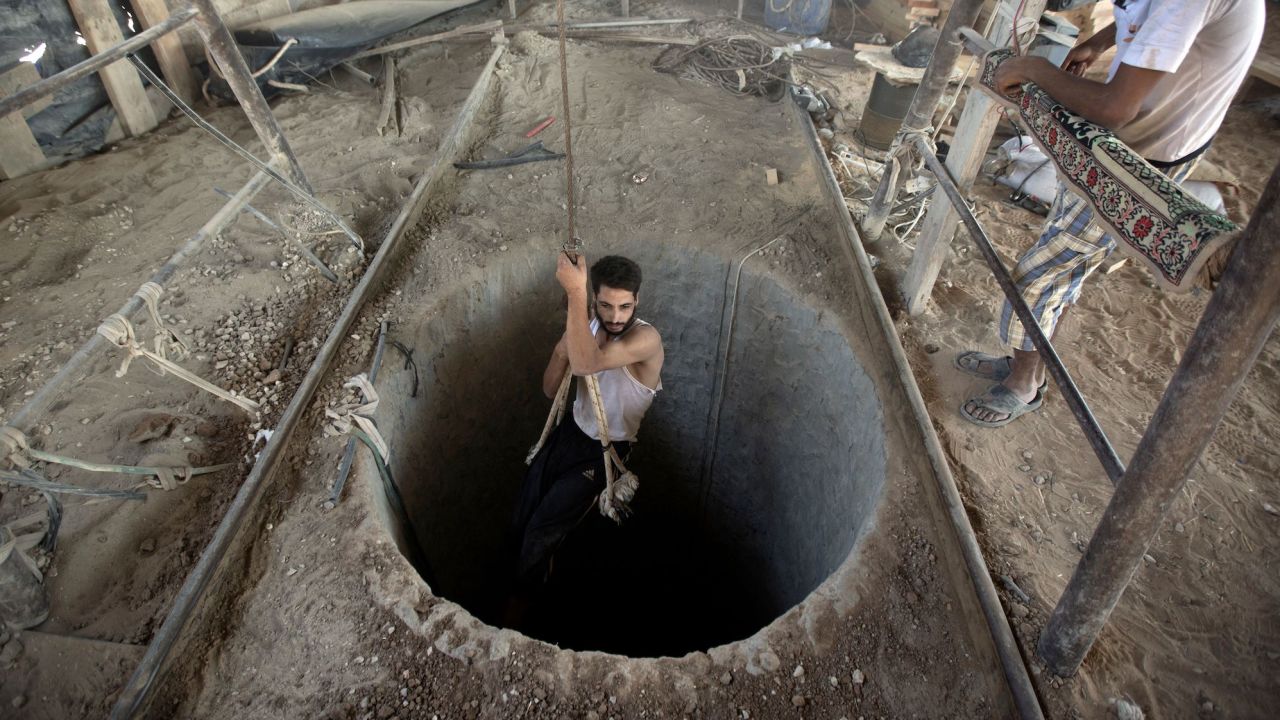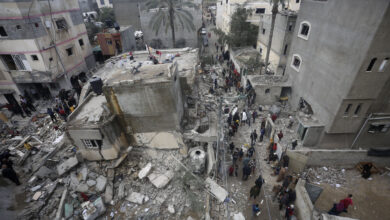
But the attack was launched from the Hamas-ruled enclave of Gaza, a 140-square-mile (360-square-kilometer) strip of Mediterranean coastal land bordered on two sides by Israel and one by Egypt.
It’s a poor, densely populated area, with few resources.
And it has been almost completely cut off from the rest of the world for nearly 17 years, when Hamas seized control, prompting Israel and Egypt to impose a strict siege on the territory, which is ongoing.
Israel also maintains an air and naval blockade on Gaza as well as a vast array of surveillance.
Which begs the question: How did Hamas amass the sheer amount of weaponry that enabled the group to pull off coordinated attacks that have left more than 1,200 people dead in Israel and thousands more injured – while continuing to rain rocket fire down on Israel?
The answer, according to experts, is through a combination of guile, improvisation, tenacity and an important overseas benefactor.
The Iran factor
“Hamas acquires its weapons through smuggling or local construction and receives some military support from Iran,” the CIA’s World Factbook says.
While the Israeli and US governments have yet to find any direct role by Iran in last weekend’s raids, experts say the Islamic Republic has long been Hamas’ main military supporter, smuggling weapons into the enclave through clandestine cross-border tunnels or boats that have escaped the Mediterranean blockade.
“Hamas’ tunnel infrastructure is still massive despite Israel and Egypt regularly degrading it,” said Bilal Saab, senior fellow and director of the Defense and Security Program at the Middle East Institute (MEI) in Washington.
“Hamas has received arms from Iran smuggled into the (Gaza) Strip via tunnels. This often included longer-range systems,” said Daniel Byman, a senior fellow with the Transnational Threats Project at the Center for Strategic and International Studies (CSIS).
“Iran has also been shipping Hamas its more advanced … ballistic missiles via sea, in components for construction in Gaza,” said Charles Lister, senior fellow at the MEI.
But Iran has been a mentor, too, analysts say.
“Iran also helped Hamas with its indigenous manufacturing, enabling Hamas to create its own arsenals,” said Byman at the CSIS.
A senior Hamas official based in Lebanon gave details of the Hamas’ weapons manufacturing in an edited interview with Russia Today’s Arabic-news channel RTArabic published on their website on Sunday.
“We have local factories for everything, for rockets with ranges of 250 km, for 160 km, 80km, and 10 km. We have factories for mortars and their shells. … We have factories for Kalashnikovs (rifles) and their bullets. We’re manufacturing the bullets with permission from the Russians. We’re building it in Gaza,” Ali Baraka, head of Hamas National Relations Abroad, is quoted as saying.

Recycling
For bigger items, the MEI’s Lister said Iran’s Islamic Revolutionary Guard Corps, a branch of the Iranian military that answers directly to the country’s supreme leader, has been giving Hamas engineers weapons training for almost two decades.
“Years of having access to more advanced systems has given Hamas engineers the knowledge necessary to significantly enhance its domestic production capacity,” Lister said.
And Tehran keeps the training of Hamas’ weapons makers current, he added.
“Hamas’ rocket and missile engineers are part of Iran’s regional network, so frequent training and exchange in Iran itself is part and parcel of Iran’s efforts to professionalize its proxy forces across the region,” Lister said.
But how Hamas sources the raw materials for those indigenous weapons also shows the ingenuity and resourcefulness of the group.
Gaza has none of the heavy industry that would support weapons production in most of the world. According to the CIA Factbook, its main industries are textiles, food processing and furniture.
But among its main exports are scrap iron, which can provide material to make weapons in the tunnel network below the enclave.
And that metal in many instances comes from previous destructive fighting in Gaza, according to Ahmed Fouad Alkhatib, who wrote about it for the Washington Institute for Near East Policy’s Fikra Forum in 2021.
When Gaza infrastructure has been destroyed in Israeli airstrikes, what’s left – sheet metal and metal pipes, rebar, electrical wiring – has found its way into Hamas’ weapon workshops, emerging as rocket tubes or other explosive devices, he wrote.
Recycling unexploded Israel munitions for their explosive material and other parts adds to Hamas’ supply chain, Alkhatib wrote.
“The IDF’s operation indirectly provided Hamas with materials that are otherwise strictly monitored or forbidden altogether in Gaza,” he wrote.
Of course, all of that didn’t happen overnight.
To fire as many munitions as it did on Saturday in such a short period means Hamas must have been building up its arsenal, both by smuggling and manufacturing, over the long haul, said Aaron Pilkington, a US Air Force analyst on Middle East affairs and PhD candidate at the University of Denver.
Baraka, the Hamas official in Lebanon, said the militant group had been preparing last weekend’s attack for two years.
He made no mention of any outside involvement in the planning of the attack, saying in the Russian media report only that the allies of Hamas “support us with weapons and money. First and foremost, it is Iran that gives us money and weapons.”
The analysts also say the size and scope of Hamas’ raids on Israel caught them – as well as Israeli and other countries intelligence services – off guard.
“It is important to remember that firing off a bunch of rockets is actually very uncomplicated,” Pilkington said.
“What is surprising, … is how you could set stockpile, move, set up, and fire thousands of rockets all while eluding Israeli, Egyptian, Saudi intelligence, etc. It is difficult to see how Palestinian militants could have done this without … Iranian guidance.”
CNN’s Tamara Qiblawi and Jen Deaton contributed to this report.




